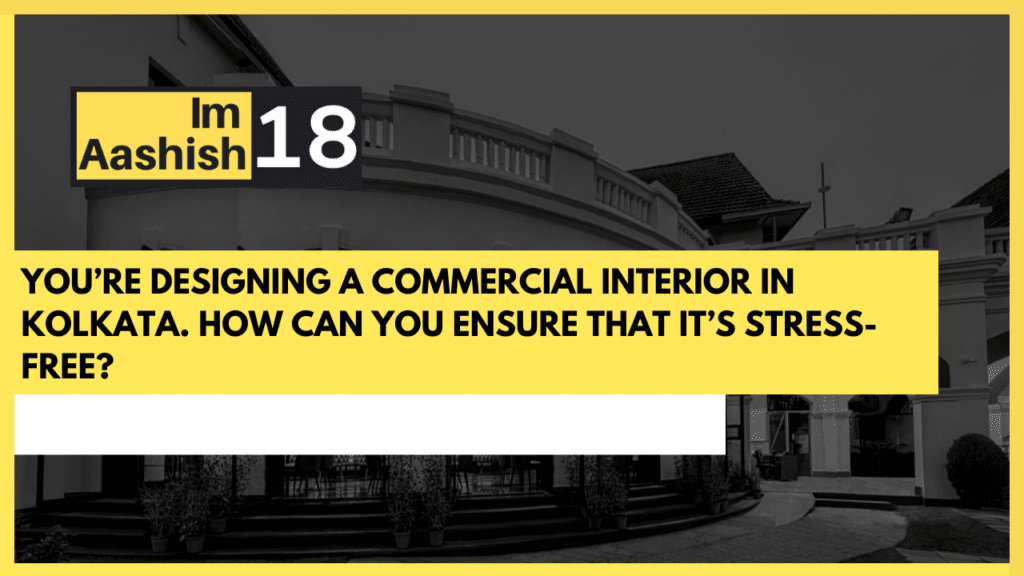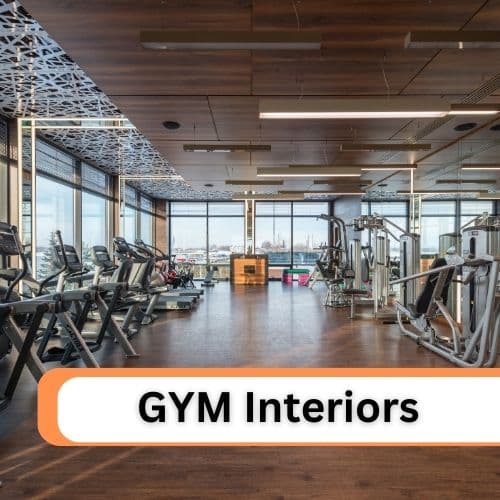Designing a commercial interior can be a daunting task, especially in a bustling city like Kolkata. However, with the right strategies in place, you can ensure that the process is stress-free and yields exceptional results. In this comprehensive guide, we’ll explore seven smart strategies to help you navigate the challenges of designing a commercial interior in Kolkata while maintaining a stress-free environment.
Understanding the Needs of the Space
Before diving into the design process, it’s essential to gain a thorough understanding of the space you’re working with. Conduct a comprehensive assessment of the area, taking note of its size, layout, and any architectural features that need to be considered. By understanding the needs of the space upfront, you can tailor your design approach to maximize functionality and efficiency.
Utilizing Natural Light and Ventilation
One of the most effective ways to create a stress-free environment in a commercial interior is by maximizing natural light and ventilation. Incorporate large windows and skylights to allow ample natural light to flood the space, reducing the need for artificial lighting and creating a bright and airy atmosphere. Additionally, prioritize cross-ventilation to improve air quality and circulation, promoting a healthier and more comfortable environment for occupants.
Ergonomic Furniture and Layout
Investing in ergonomic furniture and thoughtful layout design is crucial for ensuring the comfort and well-being of employees and visitors. Choose furniture pieces that provide proper support and promote good posture, reducing the risk of discomfort and fatigue. Optimize the layout to minimize clutter and congestion, allowing for smooth traffic flow and easy navigation throughout the space.
Incorporating Biophilic Elements
Integrating biophilic elements into the design can have a profound impact on reducing stress and enhancing overall well-being. Incorporate natural materials, such as wood and stone, to bring the outdoors inside and create a connection with nature. Add greenery through plants and living walls to improve air quality and introduce a sense of tranquility and rejuvenation to the space.
Creating Functional Zones
Designing a commercial interior with distinct functional zones can help streamline operations and minimize stress for occupants. Divide the space into designated areas for different activities, such as workstations, meeting rooms, and relaxation areas. Clearly delineate these zones through strategic use of furniture, lighting, and signage, ensuring that each area serves its intended purpose effectively.
Prioritizing Acoustic Comfort
Noise can be a significant source of stress in a commercial environment, impacting concentration and productivity. Take steps to mitigate noise levels by incorporating acoustic materials and sound-absorbing features into the design. Install acoustic panels on walls and ceilings, use carpets and rugs to dampen sound, and opt for furniture with sound-absorbing properties to create a quieter and more conducive work environment.
Embracing Technology
Harnessing the power of technology can streamline operations and enhance the user experience in a commercial interior. Integrate smart building systems for lighting, HVAC, and security to optimize energy efficiency and ensure optimal comfort levels. Implement digital signage and interactive displays to provide information and engage visitors, creating a modern and innovative environment that fosters productivity and collaboration.
FAQs (Frequently Asked Questions)
How can I ensure that the design aligns with the brand identity of my business? To ensure that the design aligns with your brand identity, start by clearly defining your brand values, aesthetics, and target audience. Incorporate elements such as color schemes, logos, and messaging that reflect your brand identity throughout the interior design.
What role does employee feedback play in the design process? Employee feedback is invaluable in shaping the design of a commercial interior. Solicit input from employees through surveys, focus groups, and one-on-one interviews to understand their needs, preferences, and pain points. Incorporate their feedback into the design to create a space that meets their needs and fosters satisfaction and productivity.
How can I create a welcoming environment for visitors and clients? Creating a welcoming environment for visitors and clients is essential for making a positive impression and fostering strong relationships. Pay attention to factors such as lighting, seating arrangements, and signage to create a welcoming atmosphere that puts visitors at ease and makes them feel valued and respected.
Conclusion
Designing a stress-free commercial interior in Kolkata requires careful planning, thoughtful consideration of the needs of the space and its occupants, and a strategic approach to design. By incorporating smart strategies such as maximizing natural light, prioritizing ergonomic comfort, and embracing biophilic elements, you can create a space that promotes productivity, well-being, and success.






















